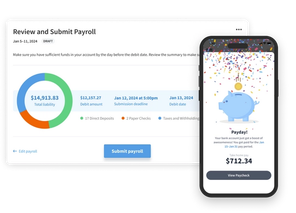
Eddy’s HR Mavericks Encyclopedia
The world's largest free encyclopedia of HR, with 700+ HR articles and podcasts.
Created by Eddy and our HR Mavericks community.
Onboarding Statistics
Onboarding a new employee effectively is almost as critical as the recruitment and selection process itself, and it has a significant impact on employee retention. Onboarding practices vary immensely, but a well-structured onboarding process that continues past an employee’s first day can lead to much greater productivity later. This article collates onboarding statistics from credible sources and research that may help you to decide your own onboarding approach.
Onboarding a new employee effectively is almost as critical as the recruitment and selection process itself, and it has a significant impact on employee retention. Onboarding practices vary immensely, but a well-structured onboarding process that continues past an employee’s first day can lead to much greater productivity later.This article collates onboarding statistics from credible sources and research that may help you to decide your own onboarding approach.
Start Improving Your Onboarding Process Today
You’ve seen the numbers. Now, let’s take a look at a few things you can do to improve the onboarding experience for every new hire who comes your way.
- Treat onboarding as an investment. Many companies don’t put much thought into the onboarding experience, and they end up losing time and money through turnover and lost productivity. Take your time learning how to onboard the right way, and you’ll find that your people are more engaged in their roles and ready to tackle their work. To go the extra mile, collect feedback about the onboarding process so you can continually improve it.
- Provide new hires with social support and a clear career path. Onboarding doesn’t last forever, but it’s a great time to help new hires build connections and get a vision of what their time at your organization will look like. Assigning onboarding buddies and emphasizing your learning and development program will help every hire feel more confident with their new job.
- Automate the onboarding process. New hire paperwork is critical, but often tedious—especially if you’re asking the new employee to fill out paper forms by hand. Make the process smoother for everyone by using onboarding software to sign and store important documents.
Choose a great onboarding software. Eddy’s onboarding software includes digitally-signable documents, secure document storage, trackable task lists, custom first-day messages, and more. Learn how Eddy can help you onboard more efficiently
Topics

Eddy
Eddy is the all-in-one HR tool built with you in mind. The robust features and ease of use will benefit your company both inside and outside your HR team.
Other Related Terms
Eddy’s HR Mavericks Encyclopedia
Onboarding Statistics
Onboarding a new employee effectively is almost as critical as the recruitment and selection process itself, and it has a significant impact on employee retention. Onboarding practices vary immensely, but a well-structured onboarding process that continues past an employee’s first day can lead to much greater productivity later. This article collates onboarding statistics from credible sources and research that may help you to decide your own onboarding approach.
Onboarding a new employee effectively is almost as critical as the recruitment and selection process itself, and it has a significant impact on employee retention. Onboarding practices vary immensely, but a well-structured onboarding process that continues past an employee’s first day can lead to much greater productivity later.This article collates onboarding statistics from credible sources and research that may help you to decide your own onboarding approach.
Start Improving Your Onboarding Process Today
You’ve seen the numbers. Now, let’s take a look at a few things you can do to improve the onboarding experience for every new hire who comes your way.
- Treat onboarding as an investment. Many companies don’t put much thought into the onboarding experience, and they end up losing time and money through turnover and lost productivity. Take your time learning how to onboard the right way, and you’ll find that your people are more engaged in their roles and ready to tackle their work. To go the extra mile, collect feedback about the onboarding process so you can continually improve it.
- Provide new hires with social support and a clear career path. Onboarding doesn’t last forever, but it’s a great time to help new hires build connections and get a vision of what their time at your organization will look like. Assigning onboarding buddies and emphasizing your learning and development program will help every hire feel more confident with their new job.
- Automate the onboarding process. New hire paperwork is critical, but often tedious—especially if you’re asking the new employee to fill out paper forms by hand. Make the process smoother for everyone by using onboarding software to sign and store important documents.
Choose a great onboarding software. Eddy’s onboarding software includes digitally-signable documents, secure document storage, trackable task lists, custom first-day messages, and more. Learn how Eddy can help you onboard more efficiently
Topics

Eddy
Eddy is the all-in-one HR tool built with you in mind. The robust features and ease of use will benefit your company both inside and outside your HR team.
Other Related Terms
Eddy's HR Newsletter
Sign up for our email newsletter for helpful HR advice and ideas.


